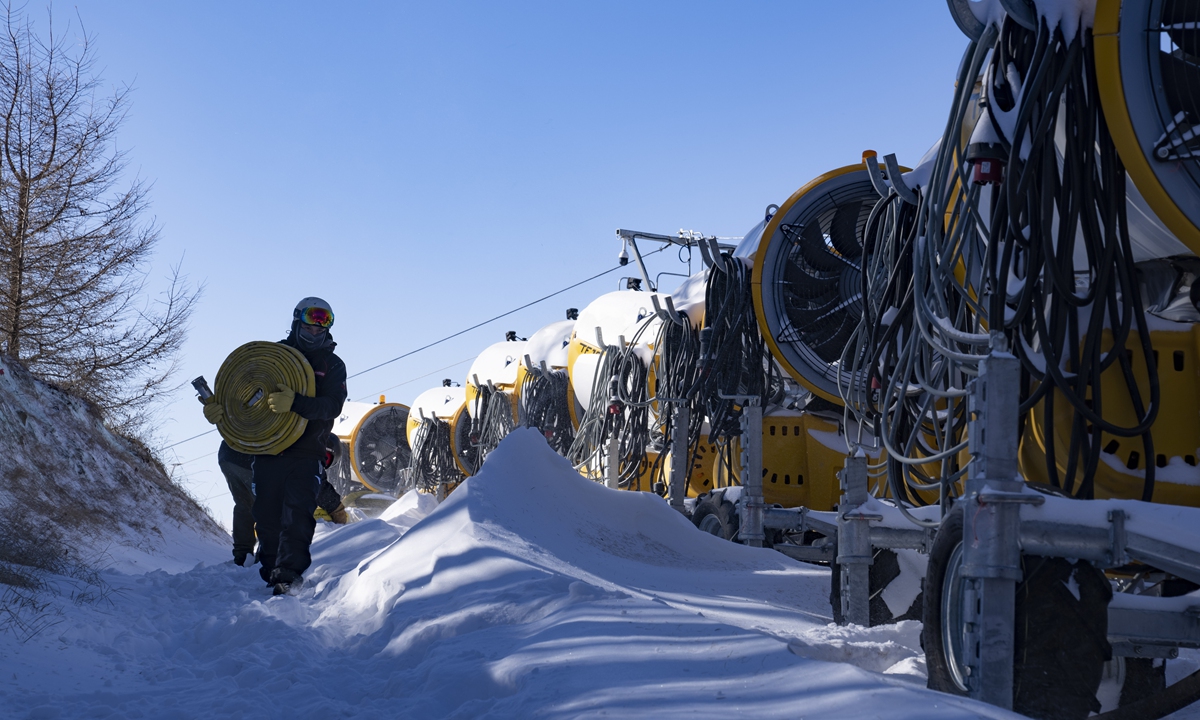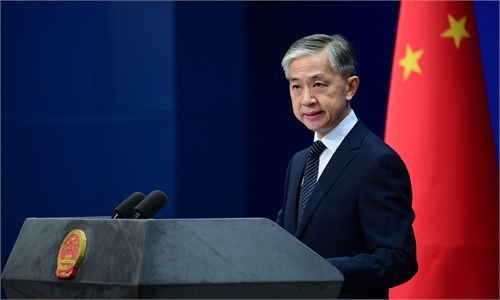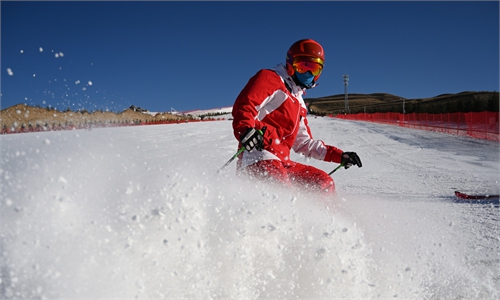SPORT / OLYMPICS
Alpine skiing area maintains ‘Green Winter Olympics’ ideal despite difficulties

Staff at the National Alpine Ski Center in the Yanqing competition area, Beijing begin to create artificial snow for the upcoming Beijing 2022 Winter Olympics on November 15, 2021. Photo: Courtesy of Beijing major project management office
Beijing's Yanqing district will be responsible for hosting alpine skiing and bobsledding events at the Winter Olympics in February 2022 and the high altitude of over 2,000 meters makes construction difficult. Nevertheless, during the six years of construction, all the people involved ensured that the concept of "Green Olympics" was fully implemented.
Standing in the starting area at the top of the highest point at 2,198 meters on Xiaohaituo Mountain, the trails of the National Alpine Ski Center look like seven white waterfalls winding down the valley from the top of the mountain, while the National Bobsleigh Center is located at the foot of the mountain. Eleven ropeways and cable cars connect each part of the alpine skiing area.
The Yanqing section is a green and clean energy area that uses 100 percent wind and solar power. It is also a "sponge-type area" where water resources are collected and reused, according to Beijing government official Zhao Beiting.
"All the native soil on the construction surface of the competition area is collected and covered with native soil after the construction is completed, and all the precious trees are protected in situ and relocated. All the venues in the competition area have passed the highest level of green building certification."
It will be open for public use after the Winter Olympics, Zhao said.
Not only was energy efficiency a goal in building the Yanqing section, but the team also worked on ecological restoration during the construction. The organizing committee brought in a special team of experts in ecological assessment and conservation, the Global Times has learned.
The work, which began in 2015 with a background survey, was completed in June 2021, making it the longest construction cycle for the Beijing Winter Olympics, Zhao said.
"The builders overcame all kinds of difficulties from the ecological survey at the beginning of the construction to the development of protection standards. The total restoration area is a stunning 2.14 million square meters."
During the construction, the protection plan for each of the plants was "privately tailored."
Plants suffering little construction disturbance were protected on-site, making them an important part of the section; for trees that could not be avoided during construction, the builders developed a detailed "migration plan."
Up to now, a total of 313 trees were protected in situ in the race area, 24,272 trees were relocated and transplanted, and nearly 300 mu (200,000 square meters) of relocation protection base was built, with a survival rate of about 91 percent.
"Before laying the snow track, we sowed many vegetation seeds on the hillside. By spring, the snow will melt and the hillside will be covered with green," Nie Shunxin, an engineer focusing on environmental protection and sustainability, told the Global Times on Friday.
The Beijing Winter Olympics will be held from February 4 to February 20, 2022 in Beijing, its Yanqing district and neighboring Zhangjiakou in North China's Hebei Province.


